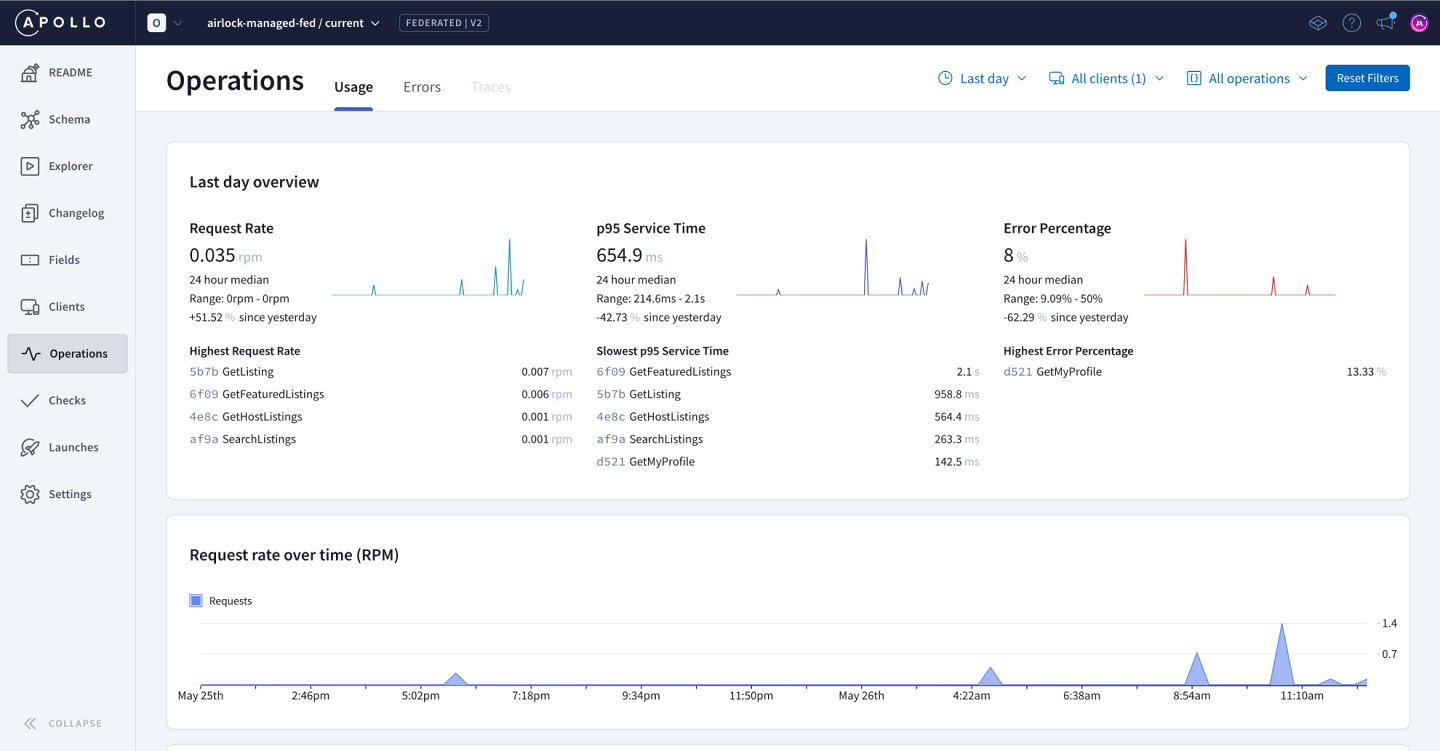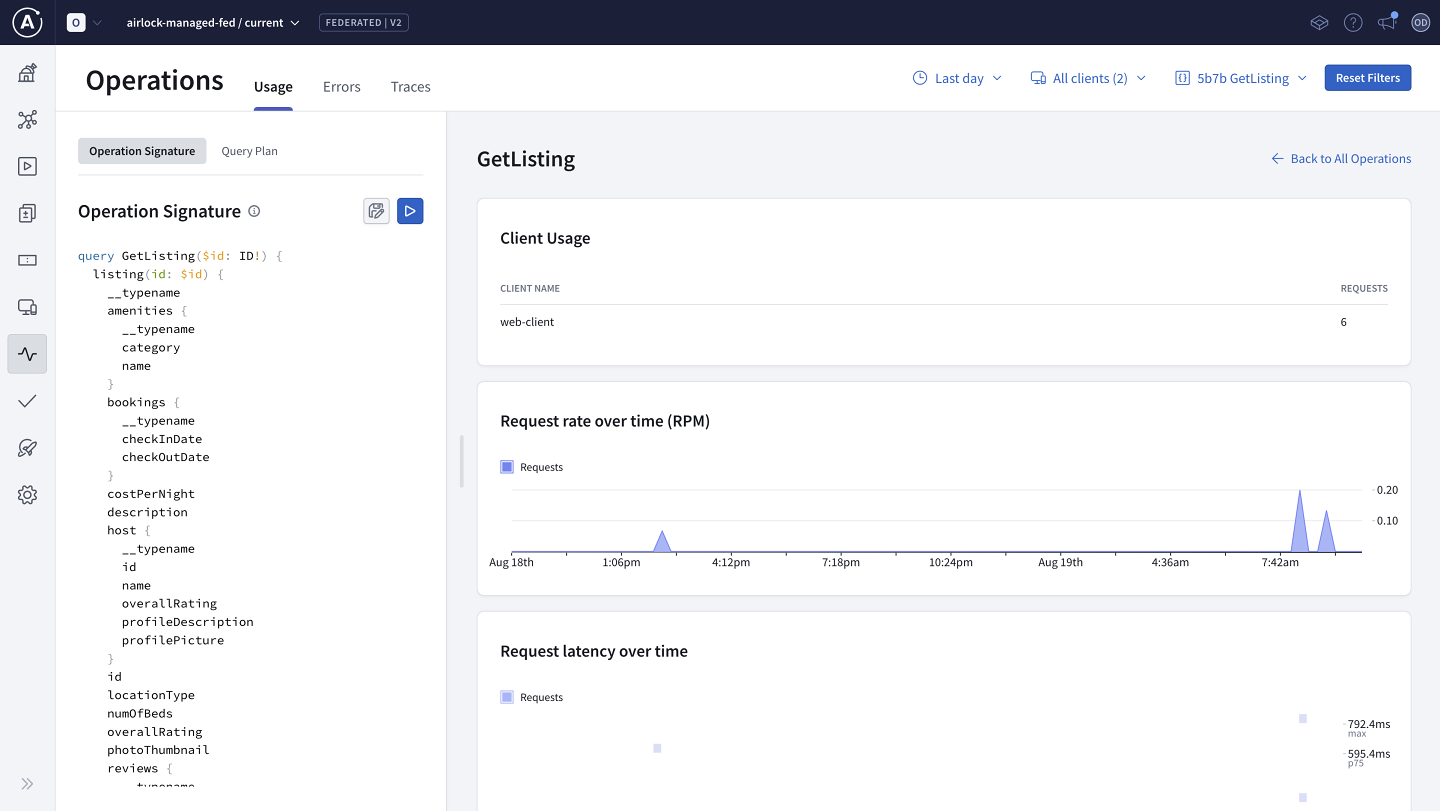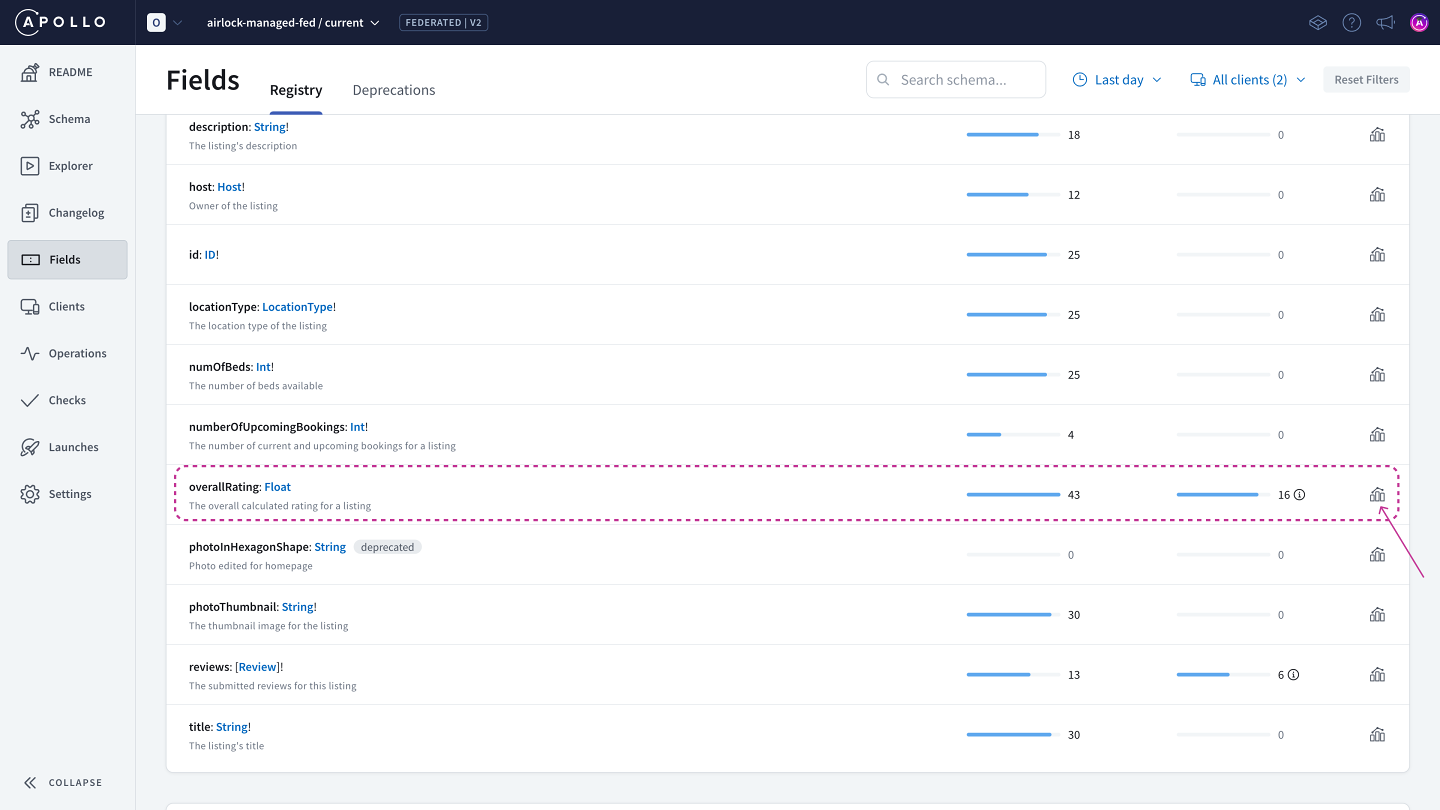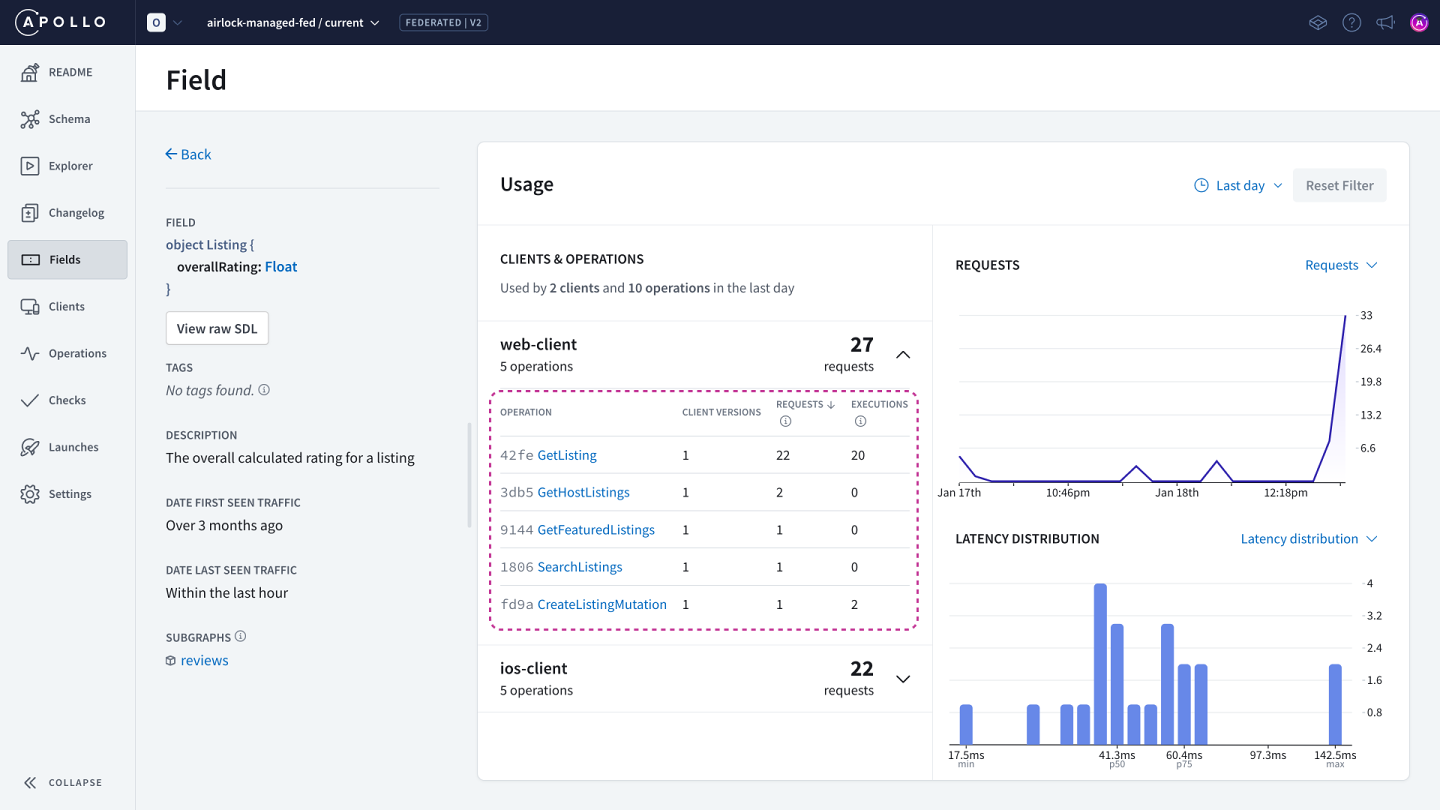Overview
The Airlock team has successfully implemented its newest feature (Project Galactic Coordinates), which has evolved and expanded the capabilities of the Airlock graph. They've also made sure to maintain the graph by adding new arguments and removing unused fields. Let's explore how we can continue to keep track of the graph's health and performance.
In this lesson, we will:
- Learn how to understand operation metrics and reporting from Apollo Studio
- Learn how to interpret metrics for field executions and referencing operations
Metrics in Apollo Studio
Apollo Studio provides us with observability tools to track the health and performance of our graph. These tools help surface patterns in how our graph gets used, which helps us identify ways to continue improving our graph.
We can observe the performance of our operations through the Operations page, which gives us an overview of operation request rates, service time, and error percentages. We can also dig into each field in our graph and its usage through the Fields page.
Let's explore the details of each page.
Operations metrics
We can navigate to the Operations page of our graph using the left-hand sidebar in Apollo Studio.

We recommend that clients clearly name each GraphQL operation they send to the graph, because these are the operation names you'll see in your Studio metrics.
It looks like one of Airlock's highest-requested operations is GetListing. When we click on this operation, we can see more specific details about this operation's usage, as well as its signature (which is the shape of the query).

Field usage
Apollo Studio also gives us insight into the usage metrics of our graph's fields. We can navigate to this page by clicking the Fields icon in the left-hand sidebar.
We can use the dropdowns on the top-right side of the page to filter metrics based on a custom time range or on a subset of clients.
Field usage metrics fall under two categories: field executions and referencing operations.
- Field executions tally how many times your servers have executed the resolver for a specific field.
- Referencing operations tally how many operations sent by clients include the field.
Let's take a closer look at the Listing.overallRating field as an example. Click the icon on the rightmost column to access that field's landing page.

In the Usage section, we can see exactly which operations include the Listing.overallRating field:

Note: The values for field executions and referencing operations can differ significantly. You can find out more about why this might be the case for the specific field by reading the Apollo docs on field usage metrics or by reading this blog post on usage data improvements in Apollo Server 3.6.
We can use these metrics to monitor the health and usage of our graph's types and fields. This helps us answer questions like:
- Are there some fields that don't get any use at all? Are there deprecated fields from long ago that aren't being used but are still in the schema? Maybe it's time to remove these from the graph to keep our schema clean and useful.
- Are we planning on making a significant change to a field? Which clients and operations would be affected? We'll need to make sure they're looped into any changes we make.
As our graph evolves, these are good questions to keep in mind, and Apollo Studio will always be there to help answer them!
Practice
Key takeaways
- Field usage metrics have two categories: field executions and referencing operations.
- Field executions indicate the number of times servers have executed the resolver for the field.
- Referencing operations indicate how many operations sent by clients have included the field.
Congratulations 🎉
Well done, you've reached the end! In this course, we learned all about how to work with an existing supergraph in production. We saw how to incorporate schema checks and graph variants into a CI/CD workflow so we can ship new features with confidence. We also explored different types of errors we might encounter from build checks and operation checks. Finally, we looked at how to use Apollo Studio to discover metrics on our client operations and field usage.
If you're looking to apply what you've learned here, we recommend tackling our upcoming Voyage III Lab, which is all about deploying the FlyBy app to production.
See you in the next series!
Share your questions and comments about this lesson
Your feedback helps us improve! If you're stuck or confused, let us know and we'll help you out. All comments are public and must follow the Apollo Code of Conduct. Note that comments that have been resolved or addressed may be removed.
You'll need a GitHub account to post below. Don't have one? Post in our Odyssey forum instead.